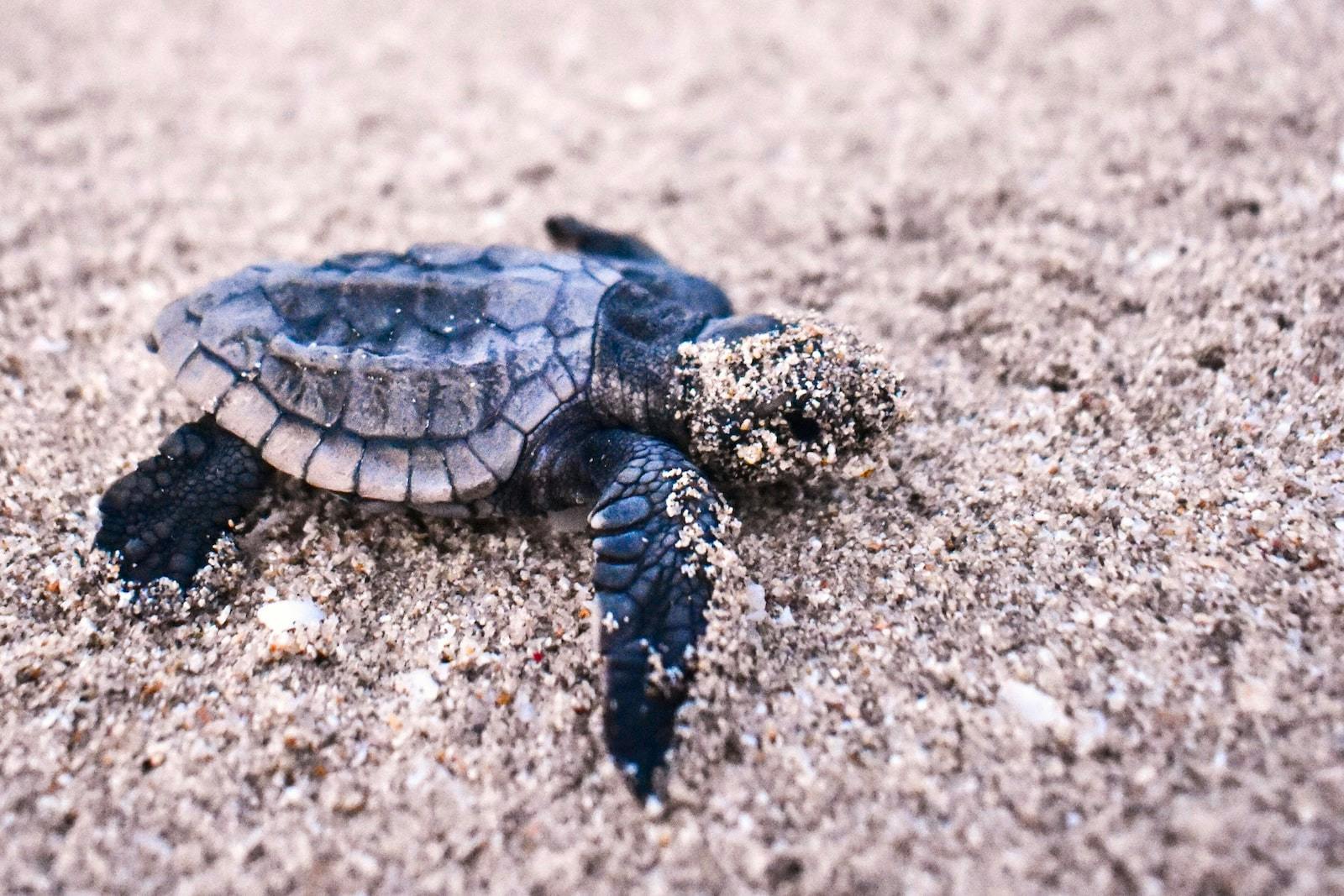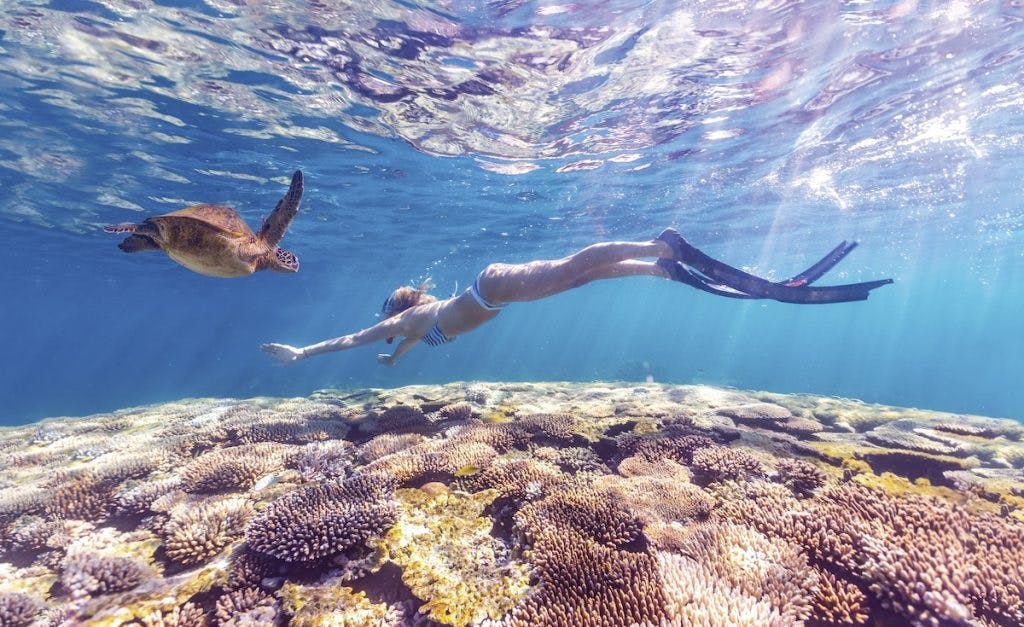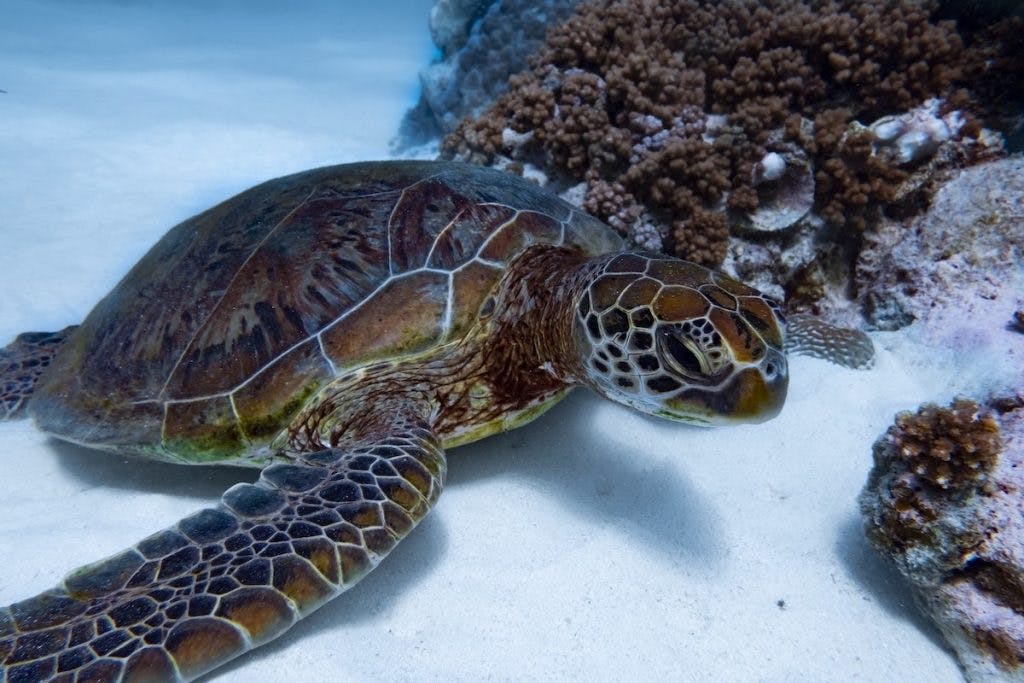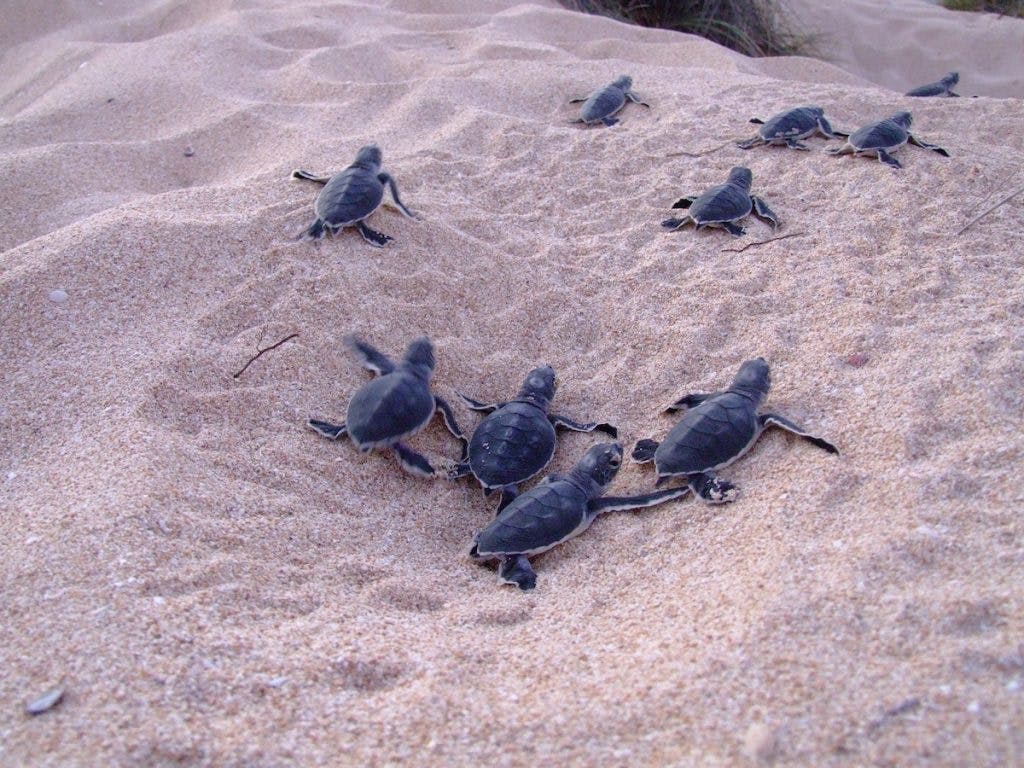It’s Turtle Time! How To Experience The Amazing Coral Coast Turtle Breeding Season

We’re lucky enough to have some pretty special wildlife here in WA, with many of them calling the magical, otherworldly landscape of the Coral Coast home.
Although the region is probably most known for Ningaloo’s majestic whale sharks, or Monkey Mia’s famous friendly dolphins, during October to March you can catch the incredible sight of Shark Bay and Ningaloo’s turtle breeding, nesting and hatching season.
So, how can you experience this once in a lifetime sight?

Shark Bay
The largest bay in Australia, Shark Bay World Heritage Area is a vast, staggeringly beautiful UNESCO-recognised site of huge ecological significance. The Heritage Area takes up a whopping 2.2 million hectares – and is home to approximately 6000 turtles! Dirk Hartog Island’s Turtle Bay is even home to Australia’s largest loggerhead turtle breeding colony, plus some green turtles who also nest on the beach.
Plentiful wildlife cruises depart from Monkey Mia: cruising through the turquoise water, you’ll be able to see turtles swimming in their natural habitat, alongside dugongs, manta rays and dolphins.
A trip to Dirk Hartog Island means you can see the turtles’ breeding colony as up close as possible – as well as native fauna like chuditches, wallabies, Shark Bay bandicoots and much more. The island, part of Malgana Country, was the location of the first recorded landing on Australian soil by Europeans – there’s a current conservation effort known as “Return to 1616” which aims to eradicate introduced species and reestablish populations of at-risk and endangered native fauna.
Stay on the island for just the day, or book in at the Eco Lodge if you’d like to explore even more. For an overnight taste of the rugged landscape, you can also camp at the Homestead or National Park grounds.
Getting To Shark Bay:
If you really want to take in WA’s vast landscape, you can drive from Perth to Shark Bay along the Coral Coast Highway – approximately 8.5 hour’s drive, it’s known as one of the world’s best scenic road trips.
Alternatively, you can catch a flight with Rex, which will only take about two hours.

Ningaloo Reef
Further north, the Ningaloo Coast World Heritage Area is also a hugely important breeding site for turtles. Head to Point Quobba, Maud’s Landing, the Cape Range National Park of the Muiron Islands to see the incredible sight of turtle hatchlings making their first forays into the world.
Exmouth’s Jurabi Turtle Centre is a must-visit: learn from rangers all about the turtles and how to help conservation efforts, as well as how to observe them in the most unobtrusive way. The centre even runs night tours, with an expertly guided interaction experience underneath the Ningaloo stars.
Spot turtles and explore the incredible surrounds of the world’s largest fringing reef with one of Ningaloo’s many snorkelling and kayaking tours. Cruise through the shallows on your kayak while taking in the spectacular fish and other marine life – then jump in for a snorkel through the sheltered coral gardens.
If you prefer to keep your feet dry, you can take in the awe-inspiring aquatic life from the comfort of a glass bottom boat tour – although we think you’ll be tempted to jump in for a closer look with your snorkel, too!
Getting To Ningaloo Reef:
As with Shark Bay, you can drive from Perth to the Ningaloo Coast via the Coral Coast Highway – Carnarvon will be approximately a 10 hour drive, Coral Bay is a 12 hour drive and Exmouth is a 13 hour drive. You can also get a 2 hour flight to Carnarvon with Rex, or fly into Learmonth Airport with Qantas, which is 30 minutes from Exmouth and 1.5 hours’ drive away from Coral Bay.

Turtle Watcher’s Code Of Conduct:
Turtles are endangered, and it’s extremely important to use the utmost care when watching or near turtles.
The Turtle Watcher’s Code of Conduct is absolutely required reading before heading to any turtle breeding or hatching sites to ensure you don’t negatively impact any wildlife.
The two key rules are “No Glow, Move Slow and Stay Low” and “Stop, Drop and Become a Rock”.
Subscribe to our free newsletter!
Flash photography and torches discourage turtles from emerging onto the beach and disorientate hatchlings so cannot be used. If you are near a turtle, keeping still and low to the ground (like a rock) will help avoid disturbing their nesting.
Your best bet is to book in with expert tours to make sure you’re enjoying the spectacle in an eco-friendly way.
You can get a full rundown on the Code of Conduct on the Ningaloo Turtles website, as well as more information about how to interact with turtles on the Australia’s Coral Coast website.
–
This article is sponsored by Australia’s Coral Coast and very happily endorsed by us. Please see our Editorial Policy for more info.